During a Jan. 30, 1996, press conference in Washington, DC, US Vice President Albert A. “Al” Gore and Russian Prime Minister Viktor S. Chernomyrdin announced the assignment of American astronaut William M. Shepherd and Russian cosmonaut Sergei K. Krikalev to the first team of crewmembers to occupy the International Space Station (ISS). Shepherd had completed three Space Shuttle missions and Krikalev had flown two long-duration missions aboard the Mir space station as well as on STS-60, becoming the first Russian cosmonaut to fly aboard the Space Shuttle. At the time of the announcement, Shepherd and Krikalev planned to launch to ISS in May 1998 with a third crewmember, another Russian cosmonaut. Initially, the Russians designated Anatoli Y. Solovyev, a veteran of several missions to Mir, as that third crewmember but they ultimately replaced him with Yuri P. Gidzenko, also a Mir veteran. The partners later announced a backup crew composed of veteran Shuttle commander Kenneth D. Bowersox, Mir veteran Vladimir N. Dezhurov, and space rookie Mikhail V. Tyurin.
The primary tasks expected of the Expedition 1 crew included activating various systems on board the station, unpacking equipment that had been delivered, and hosting three visiting Space Shuttle crews and two unmanned Russian Progress resupply vehicles. The Shuttles planned to deliver new components to ISS including the first set of US solar arrays and the US Laboratory Module. Although the crewmembers would remain busy with the high-priority commissioning tasks, time would be set aside to conduct the first research experiments aboard ISS.
Prime Crew
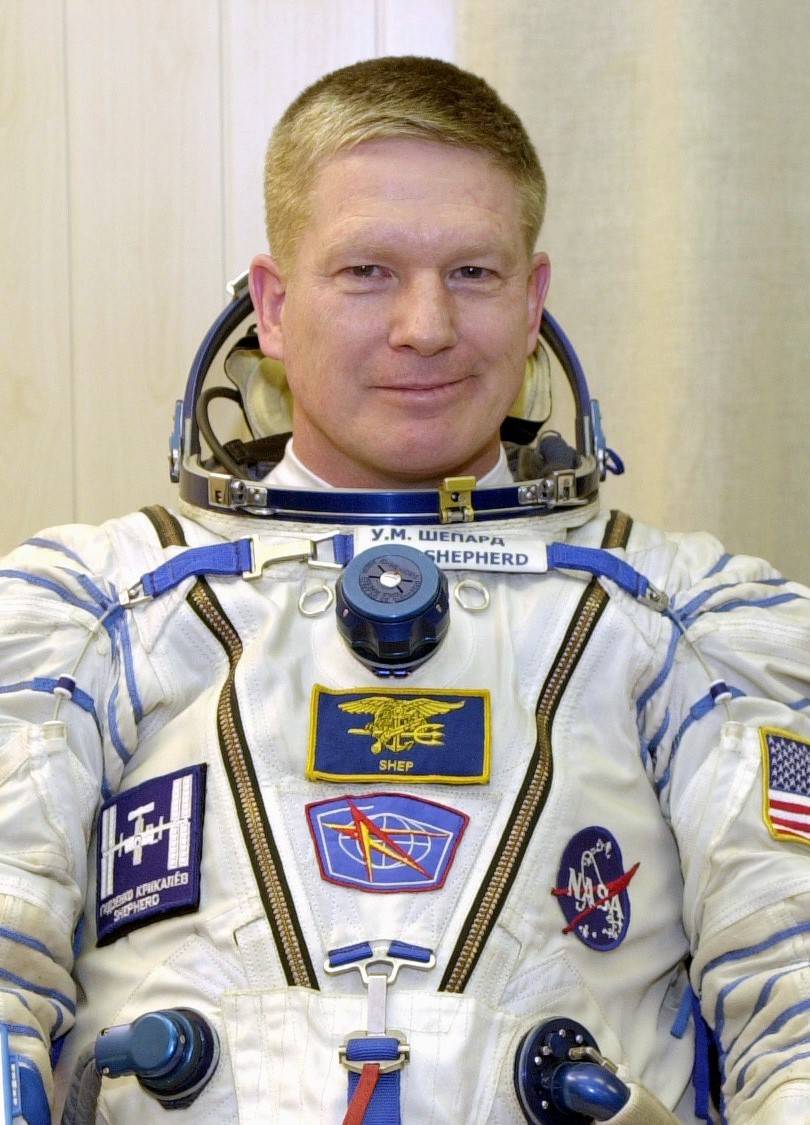 Astronaut William M. “Shep” Shepherd
Astronaut William M. “Shep” Shepherd
Expedition 1 Commander
Birthdate: July 26, 1949
Birthplace: Oak Ridge, Tennessee
Selected: May 1984
Spaceflight experience: STS-27, STS-41, STS-52
Time in space: 18 days, 8 hours, 12 minutes
No. of EVAs/EVA time: None
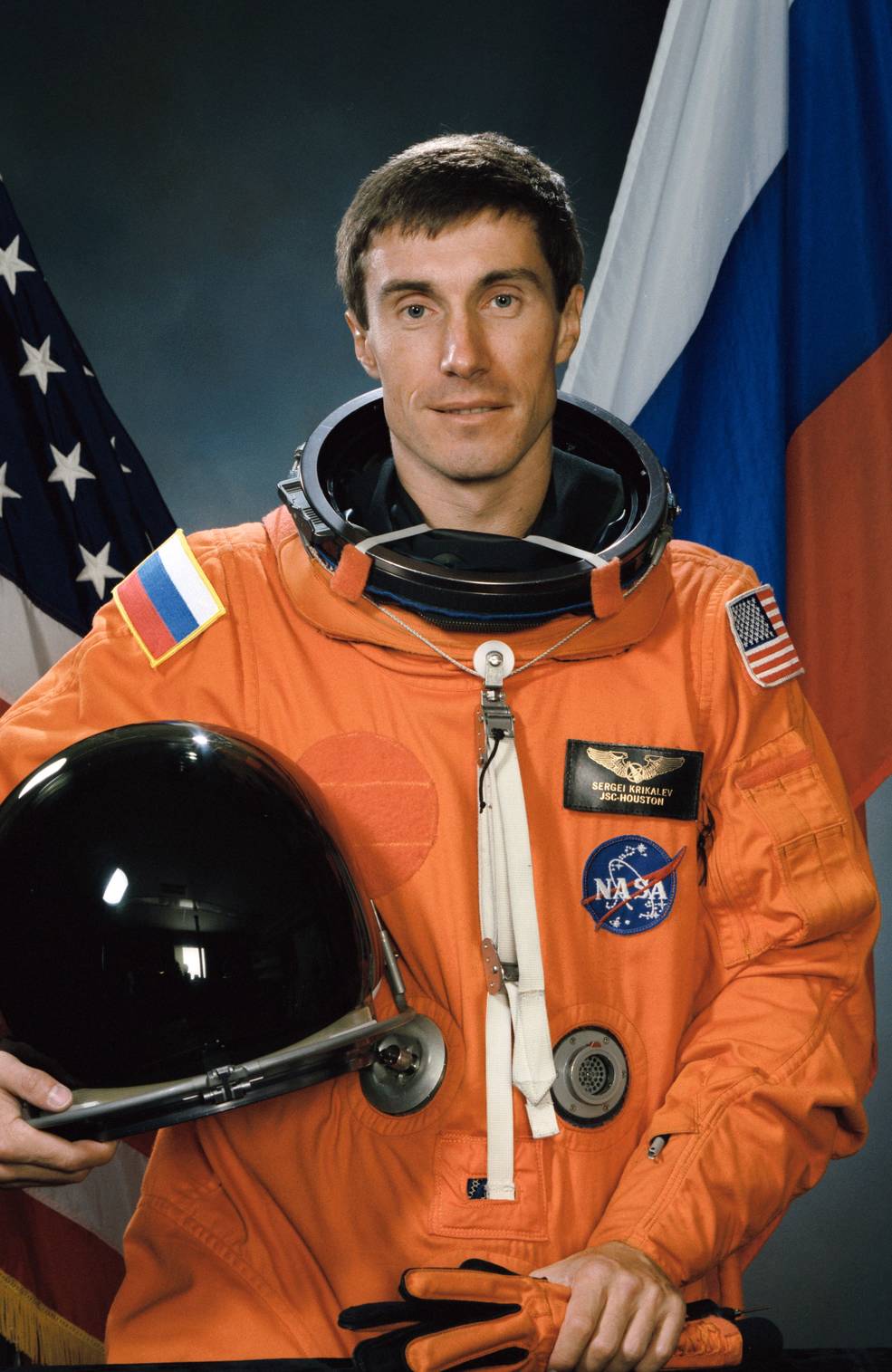 Cosmonaut Sergey K. Krikalyov
Cosmonaut Sergey K. Krikalyov
Expedition 1 Flight Engineer
Birthdate: August 27, 1958
Birthplace: Leningrad (now St. Petersburg)
Selected: September 1985
Spaceflight experience: Mir-4, Mir-9/10, STS-60 (flew on STS-88 between his selection and Expedition 1)
Time in space: 472 days, 1 hour, 20 minutes (not including STS-88)
No. of EVAs/EVA time: 7/36 hours, 10 minutes
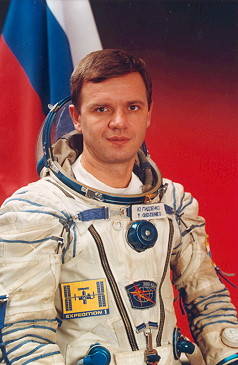 Cosmonaut Yuri P. Gidzenko
Cosmonaut Yuri P. Gidzenko
Expedition 1 Flight Engineer and Soyuz Commander
Birthdate: March 26, 1962
Birthplace: Yelanets (now in Ukraine)
Selected: March 1987
Spaceflight experience: Mir-20
Time in space: 179 days, 1 hour, 42 minutes
No. of EVAs/EVA time: 2/3 hours, 35 minutes
Backup Crew
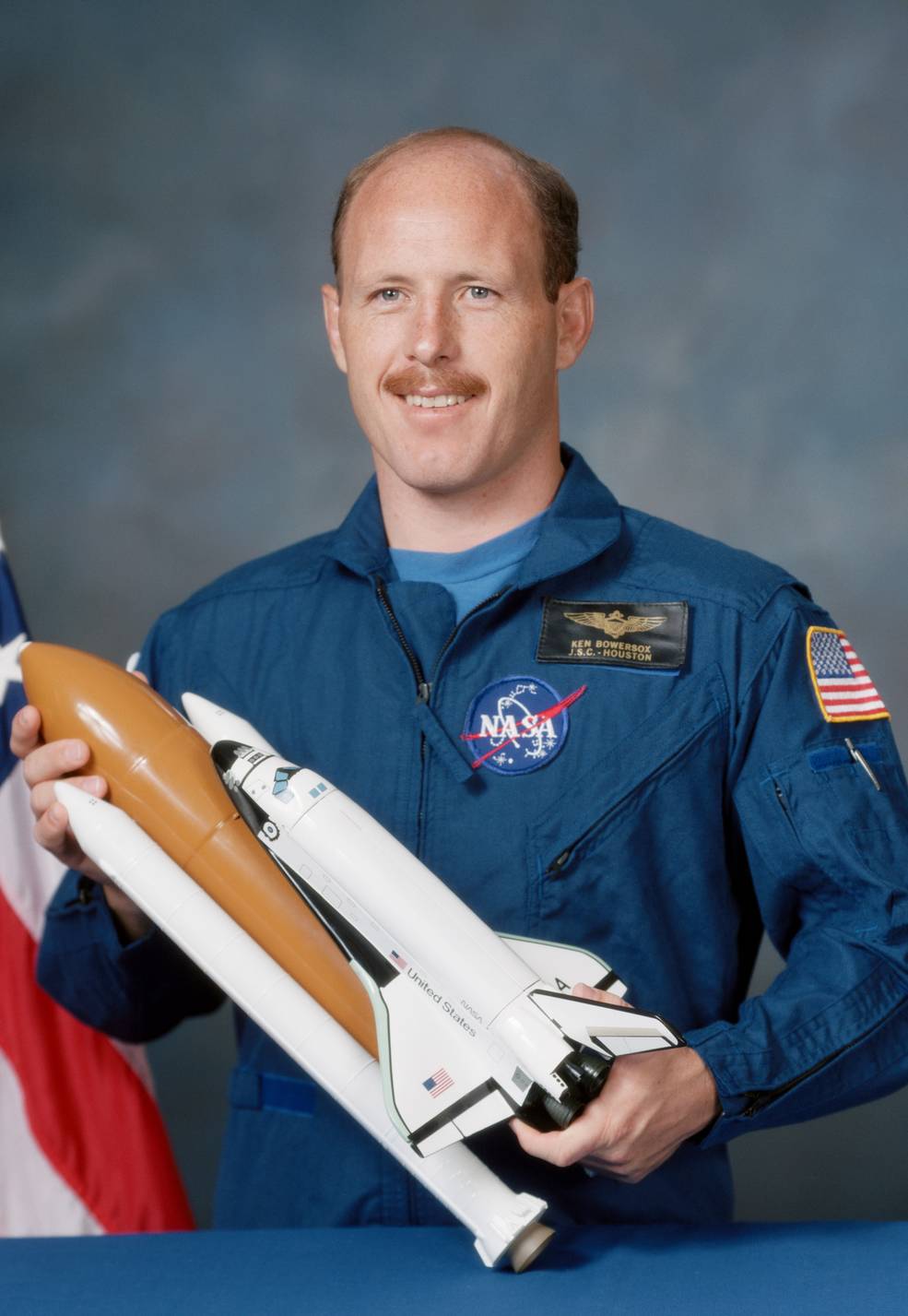 Astronaut Kenneth D. Bowersox
Astronaut Kenneth D. Bowersox
Expedition 1 Backup Commander
Birthdate: November 14, 1956
Birthplace: Portsmouth, Virginia
Selected: June 1987
Spaceflight experience: STS-50, STS-61, STS-73
Time in space: 40 days, 15 hours, 11 minutes
No. of EVAs/EVA time: None
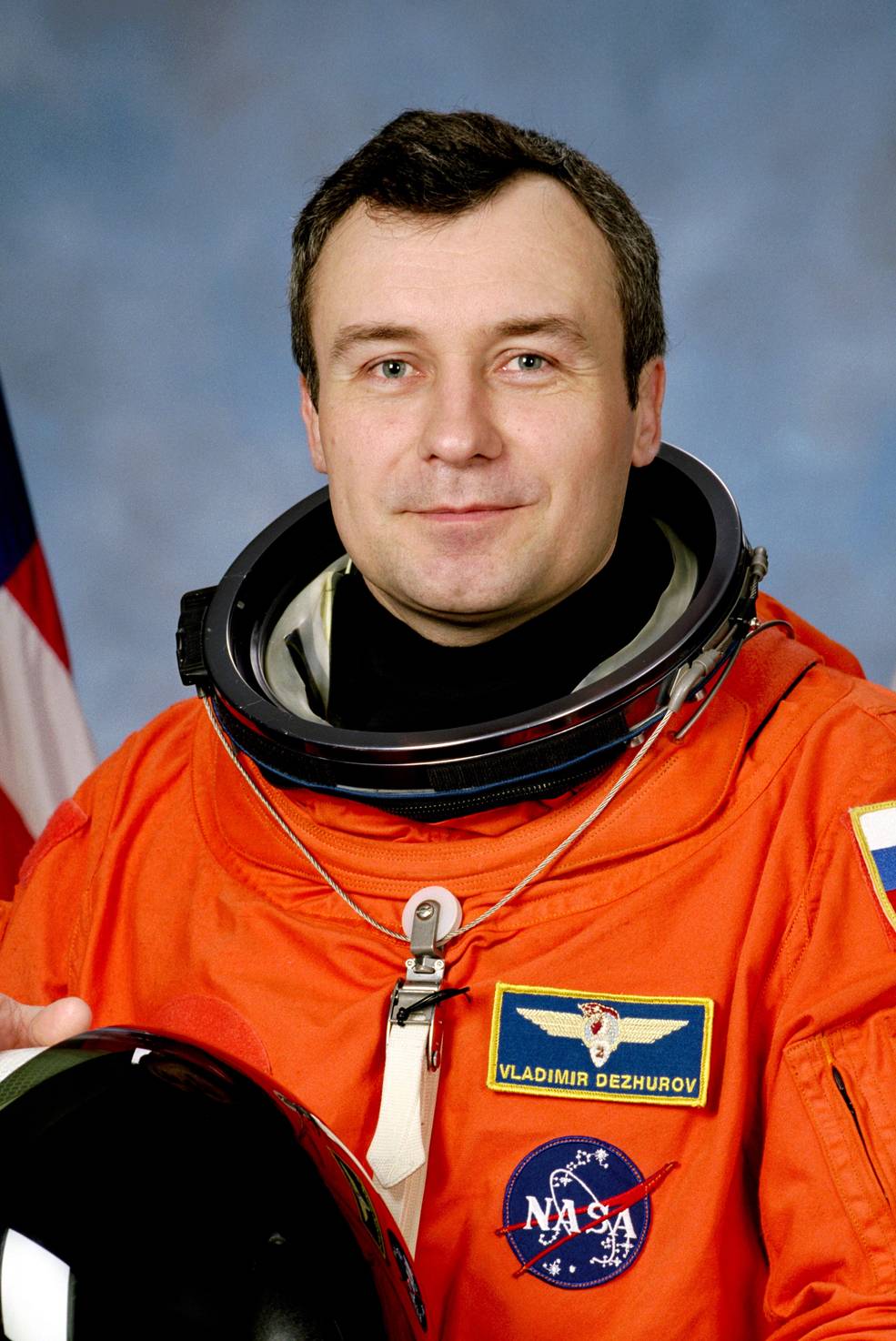 Cosmonaut Vladimir N. Dezhurov
Cosmonaut Vladimir N. Dezhurov
Expedition 1 Backup Flight Engineer and Soyuz Commander
Birthdate: July 30, 1962
Birthplace: Yavas (now in Moldova)
Selected: March 1987
Spaceflight experience: Mir-18
Time in space: 115 days, 8 hour, 43 minutes
No. of EVAs/EVA time: 5/18 hours, 57 minutes
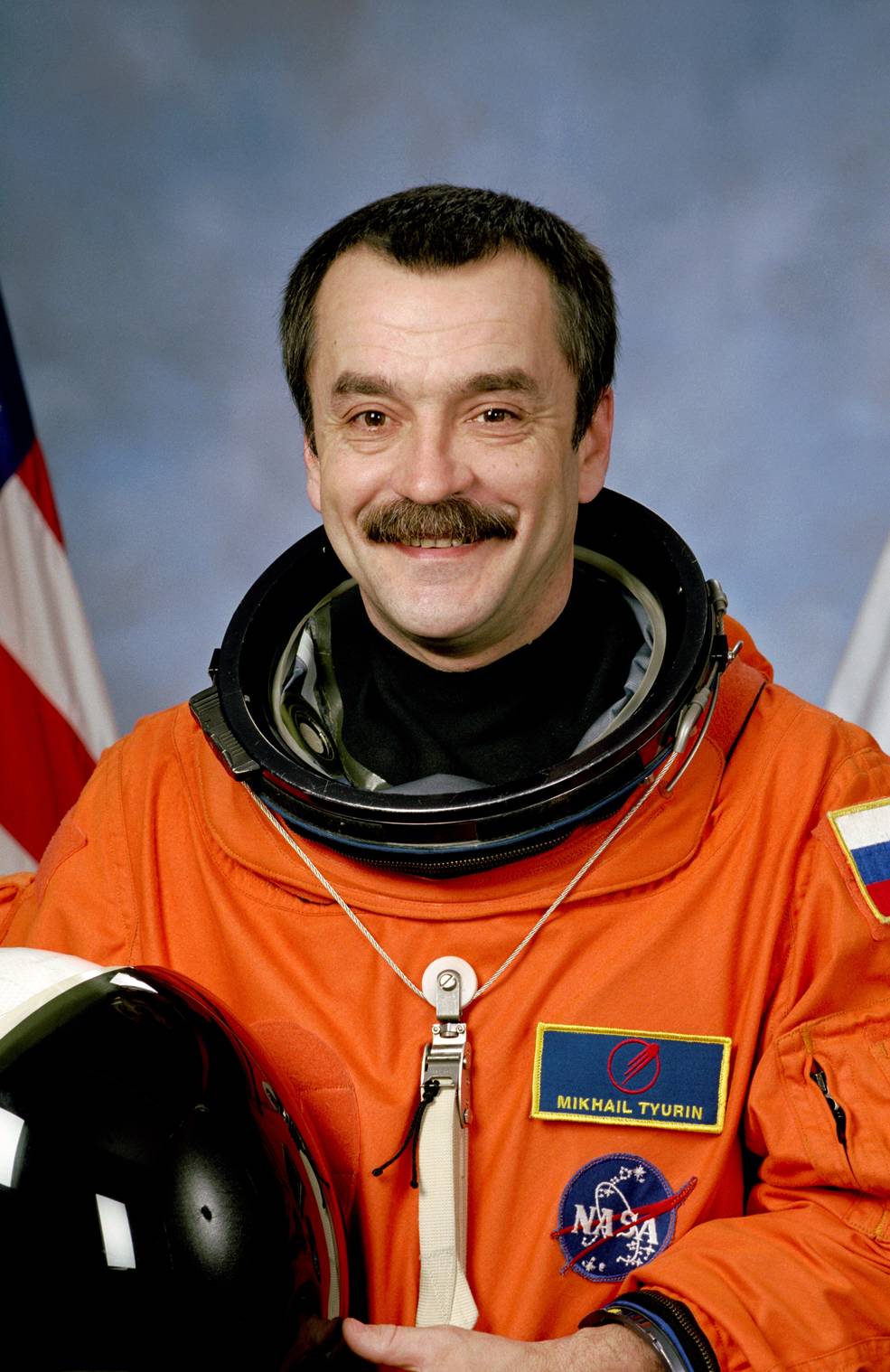 Cosmonaut Mikhail V. Tyurin
Cosmonaut Mikhail V. Tyurin
Expedition 1 Backup Flight Engineer
Birthdate: March 2, 1960
Birthplace: Kolomna
Selected: April 1994
Spaceflight experience: None
Time in space: None
No. of EVAs/EVA time: None
After delays in the launch of the Zvezda Service Module that included living quarters, Shepherd, Krikalev, and Gidzenko launched from the Baikonur Cosmodrome in Kazakhstan on Oct. 31, 2000. Two days later they docked with ISS, then composed of the Zarya, Unity, and Zvezda modules, to begin their 136-day stay aboard the station. With a permanent crew of three on board, assembly truly began in earnest to develop the station’s capabilities. The Z1 truss segment added to the top of Node 1 added a communications capability while the P6 truss segment brought the first set of US solar arrays to significantly increase the available power. With the additional power, the US Destiny laboratory module came next along with the first research racks. The first of many crew rotations replaced the Expedition 1 crew with a new crew, a scenario repeated many times in the life of ISS.
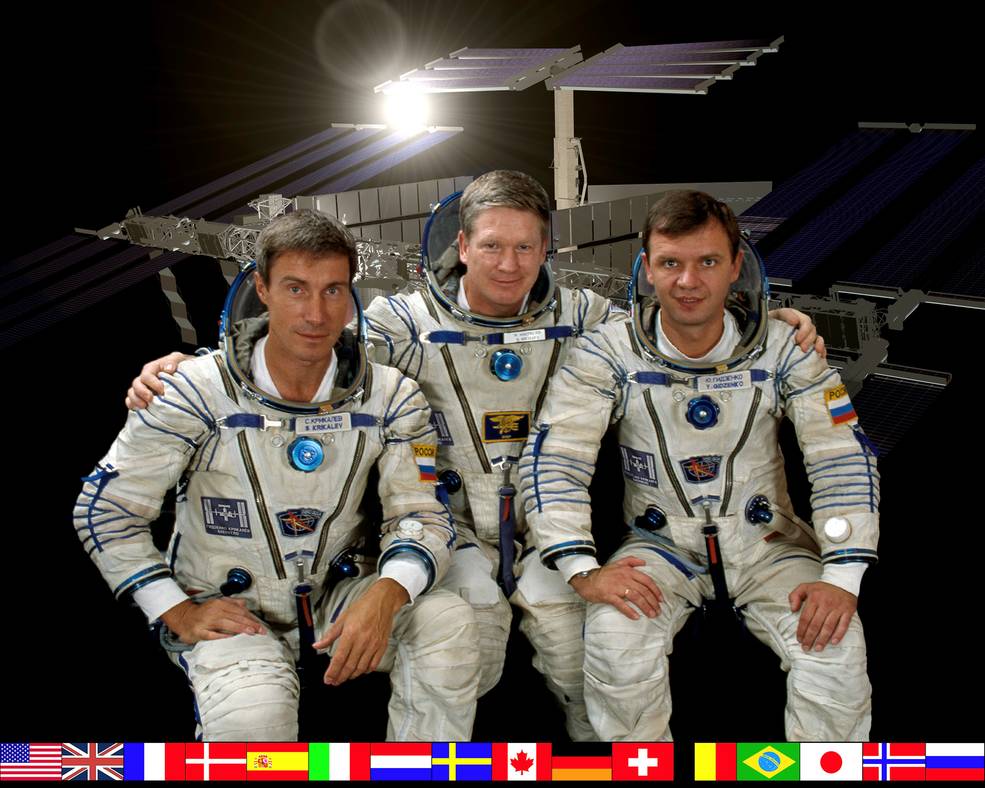
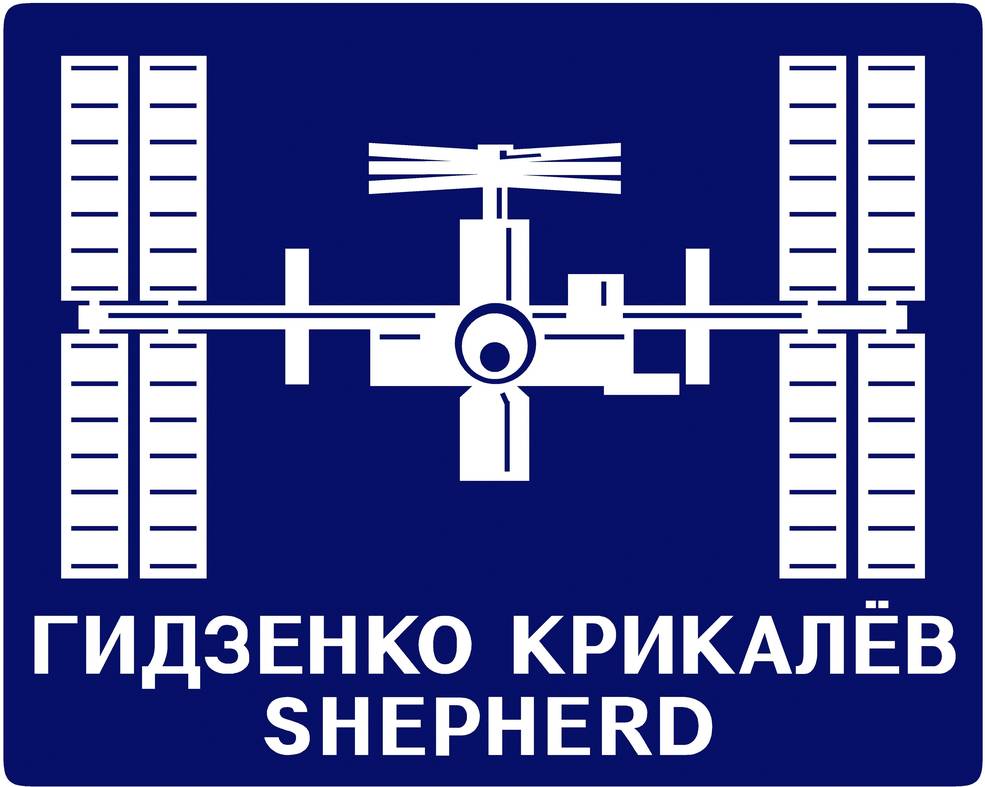
Left: Official photo of the ISS Expedition 1 crew (left to right)
Krikalev, Shepherd, and Gidzenko.
Today, ISS is the largest space vehicle ever built and a unique microgravity laboratory for conducting research in a wide variety of scientific disciplines. Including its solar arrays, it is as large as a football field. The habitable volume in its various international modules is larger than a six-bedroom house. Since November 2000, more than 230 individuals from 19 countries have visited ISS. As a laboratory, ISS has hosted more than 2,700 scientific investigations from more than 100 countries.
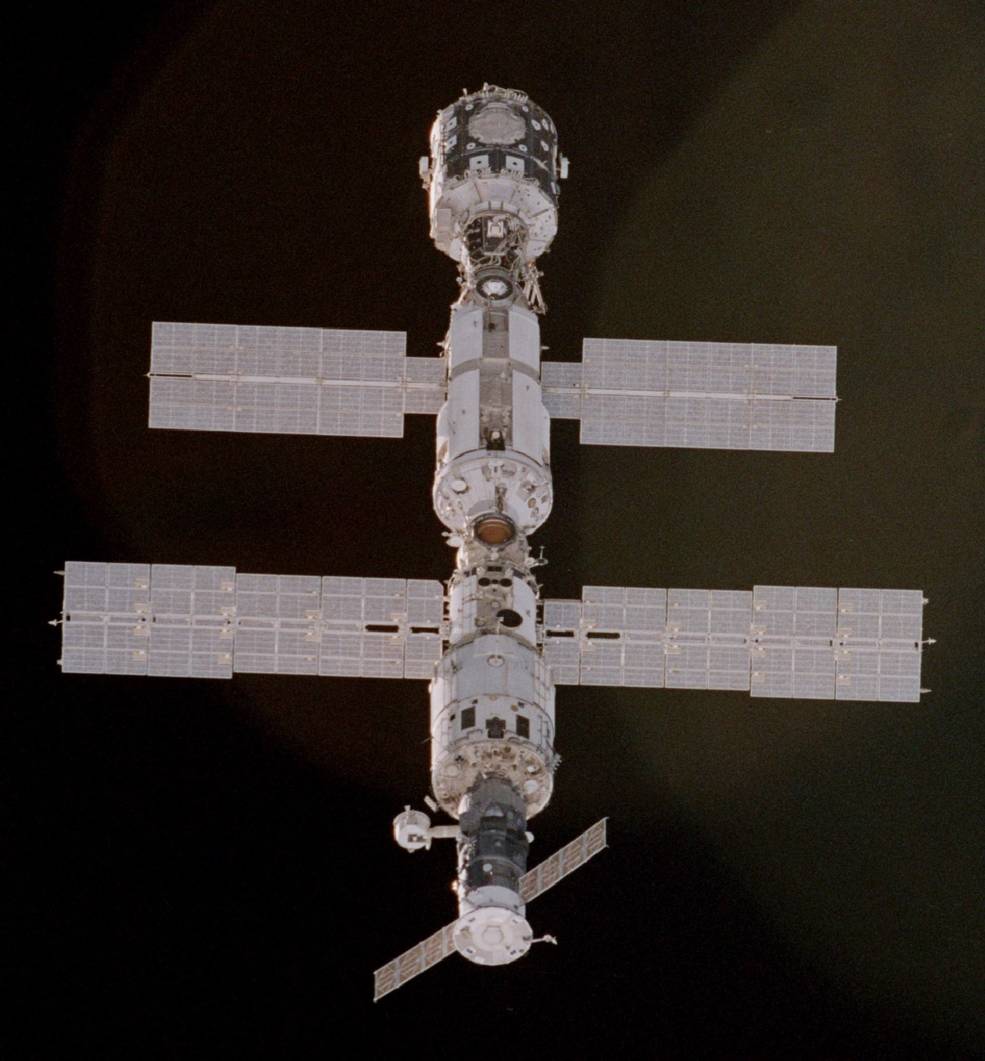
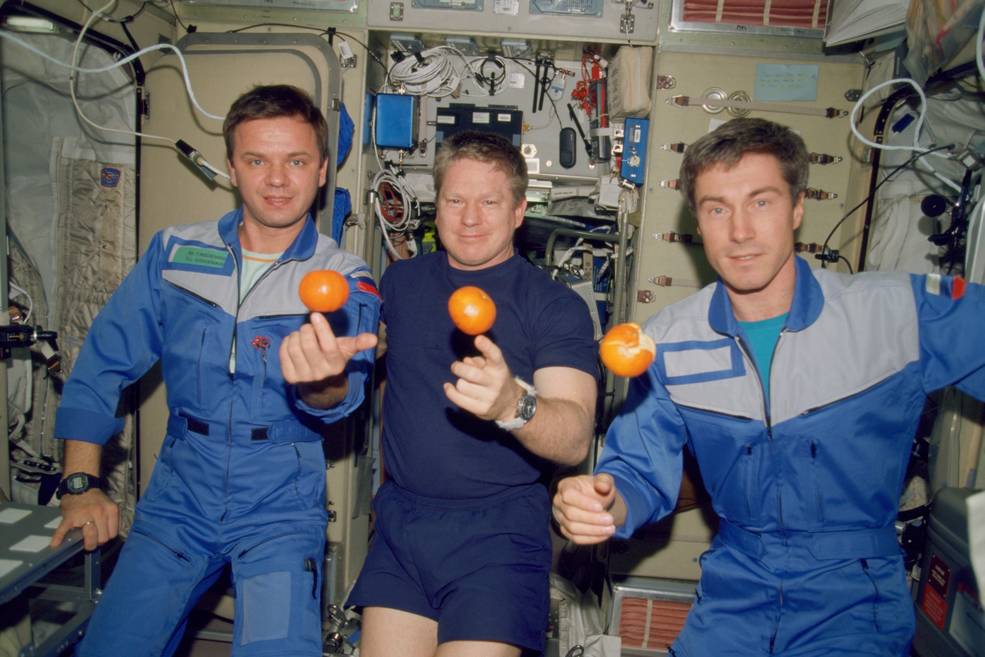
Left: ISS as it appeared when the Expedition 1 crew took up residence.
Right: Expedition 1 crew (left to right) Gidzenko, Shepherd, and Krikalev aboard ISS.


























